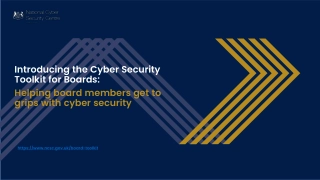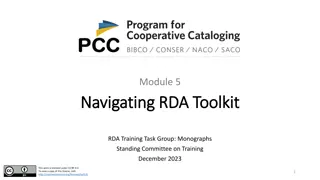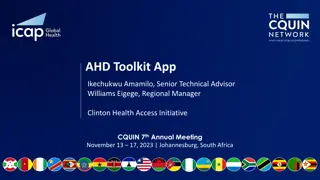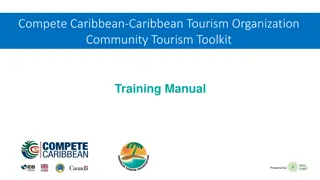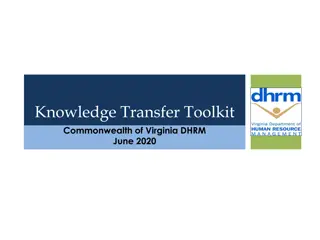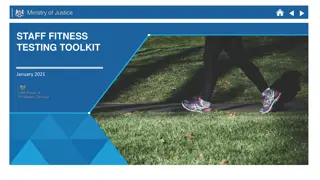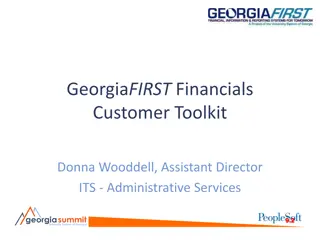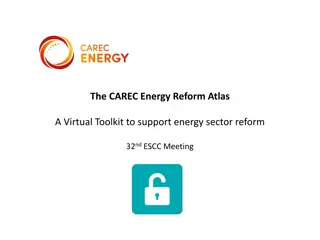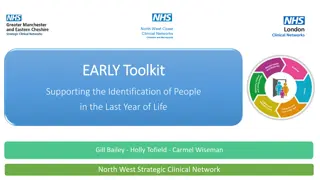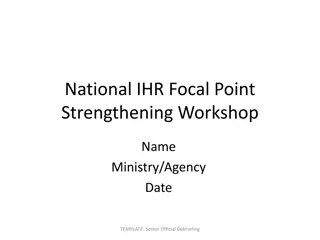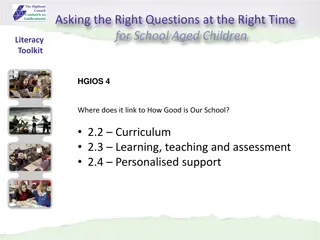Toolkit to support sector strengthening
This content highlights the toolkit to support sector strengthening in WASH (Water, Sanitation, and Hygiene) implementation. It includes information about tools, modules, building blocks, responsibilities, and key steps in identifying and removing bottlenecks in the sector. The toolkit emphasizes the importance of accountability, regulation, political leadership, financing, planning, and monitoring to enhance WASH programming. Examples and reference tools provided demonstrate the importance of clear roles, responsibilities, and relationships among stakeholders to ensure effective WASH programs.
Download Presentation

Please find below an Image/Link to download the presentation.
The content on the website is provided AS IS for your information and personal use only. It may not be sold, licensed, or shared on other websites without obtaining consent from the author.If you encounter any issues during the download, it is possible that the publisher has removed the file from their server.
You are allowed to download the files provided on this website for personal or commercial use, subject to the condition that they are used lawfully. All files are the property of their respective owners.
The content on the website is provided AS IS for your information and personal use only. It may not be sold, licensed, or shared on other websites without obtaining consent from the author.
E N D
Presentation Transcript
Toolkit to support sector strengthening Evariste Kouassi-Komlan UNICEF
WASH BAT: Unlock country enabling environment bottlenecks in WASH Implementation: 15 Countries in 2 years Contributed to: SWA Commitments sector investment plans/strategies Revision: 2015 and 2016 to align with SWA building blocks WASH BAT 2.0 has Option to be adapted to country context
WASH BAT: Includes flexible modules WASH in School Hygiene Sanitation Water Political leadership Urban Institutional arrangements Financing Planning, monitoring, and review Rural National Capacity Policy/ Strategy Accountability and regulation Regional District Service Provider Users
Distribution of responsibility between sector stakeholders and plan Key steps Identify Removal Activities Identify Bottle- necks Costs, Finance, Roles Joint sector review Implem entation Scoring of factors Partner review Existing Evidence, data sources, information Tools to support the analysis and remove the Bottlenecks
Toolkit: What is in each building block? Sector Policy/ Strategy 1. Definition/ Characteristic Institutional arrangements Financing Planning/ Monitoring/Review 2. Proxy Indicator 3. Illustrative example Capacity 4. Results expected 5. Reference tool/guide Political leadership CSO, GLAAS, TRACKFIN, VFM, JSR, ACC and Reg, ESI, WASH Cost Accountability and regulation
Example: Accountability and Regulation Accountability in the WASH sector is the democratic principle whereby elected officials and those in charge of providing access to water supply and sanitation services account for their actions ( ). Regulations are rules or governmental orders designed to control or govern behavior and often have the force of law.. 1. Definition/ Characteristic Regulations for sustainability systems with clear roles , responsibilities and relationships between regulators, community users, service providers and policy makers to enhance WASH programming 2. Proxy Indicator 3. Illustrative example Support the development and use of access to information, i.e. initiatives of citizens and citizen groups using the formal procedures of legislation to obtain information. ( .) 4. Expected results Government and WASH sector have accountability systems and regulations in place to ensure that roles, responsibilities and relationships between regulators, community users, service providers and policy makers enhance WASH programming. 5. Reference tools Accountability in WASH: A Reference Guide for Programming _ UNDP Water Governance Facility/UNICEF/SIWI, (2012)http://watergovernance.org/resources/accountability-in-wash-a- reference-guide-for-programming/ UNDP Water Governance Facility/UNICEF (2015) WASH and Accountability: Explaining the Concept Accountability for Sustainability Partnership: UNDP Water Governance Facility at SIWI and UNICEF http://www.unicef.org/wash/files/Accountability_in_WASH_Explaining_the_Concept.pdf


